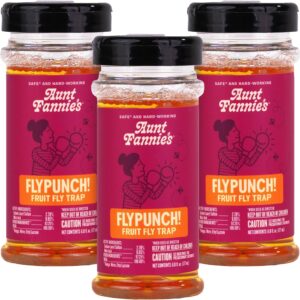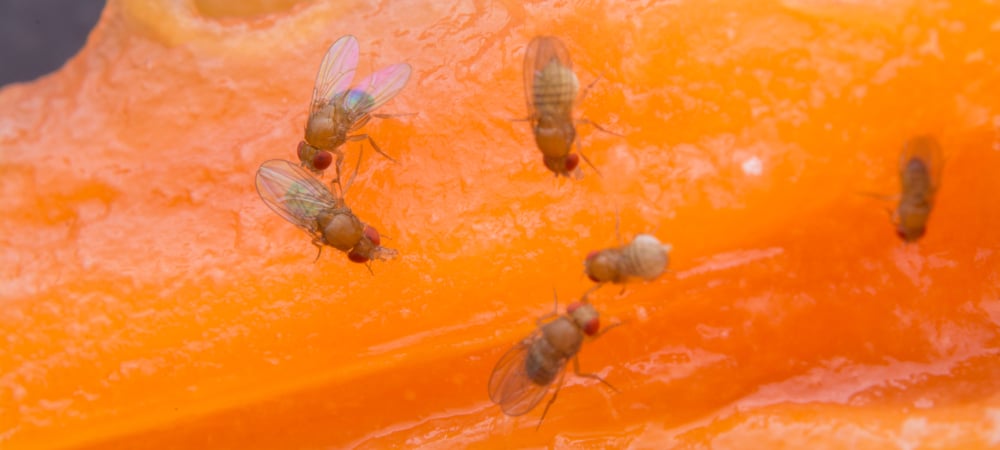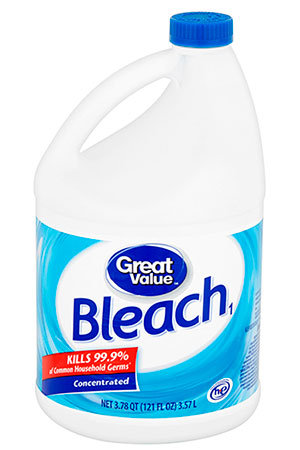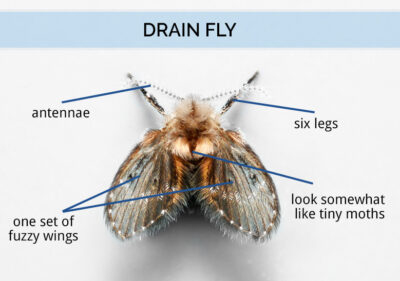Fruit flies can quickly transform your kitchen into a frustrating battleground. These tiny pests multiply rapidly, contaminate food surfaces, and create unsanitary conditions throughout your home. The solution for how to get rid of fruit flies combines immediate removal of attractants like overripe produce with strategic trapping methods using apple cider vinegar, commercial baits, and sticky traps. Success requires addressing both adult flies and their breeding sites while implementing prevention measures to stop future infestations.
Quick Picks: Best Fruit Fly Solutions

Most Effective

Best Commercial

Best Value
- Understanding Fruit Flies: Why They’re More Than Just Annoying
- How Fruit Flies Enter Your Home
- 7 Proven Methods to Eliminate Fruit Flies
- Special Locations: Fruit Flies in Bathrooms
- Does Bleach Kill Fruit Flies?
- Comprehensive Prevention Strategies
- Identifying Fruit Fly Look-Alikes That Bite
- When Professional Help Is Needed
- Monitoring and Maintenance
- Frequently Asked Questions
Understanding Fruit Flies: Why They’re More Than Just Annoying

Fruit flies (Drosophila melanogaster) may seem like minor nuisances, but these tiny insects pose several genuine problems beyond simple annoyance. Understanding their impact helps motivate proper elimination efforts.
Fruit flies can contaminate food surfaces by transferring bacteria from decaying matter to fresh produce. Their rapid reproduction means small problems quickly become major infestations.
Problems Fruit Flies Cause
Food Contamination
Fruit flies transfer bacteria and pathogens from rotting organic matter to fresh food surfaces, potentially causing spoilage and foodborne illness risks.
Agricultural Damage
These pests lay eggs directly in ripe fruits, making produce unsuitable for consumption or sale, resulting in significant economic losses.
Allergic Reactions
Sensitive individuals may experience allergies or asthma symptoms triggered by fruit fly feces and body particles in the air.
Fruit flies do not bite or sting humans. They lack the necessary mouthparts for biting and primarily feed on decaying fruits and organic materials through sponging mouthparts.
How Fruit Flies Enter Your Home
Understanding entry points helps prevent future infestations. Fruit flies access homes through multiple pathways, often arriving undetected.
Common Entry Points
- Contaminated ProduceEggs and larvae often arrive on store-bought fruits and vegetables, especially organic produce with minimal pesticide treatment.
- Open Doors and WindowsThese agile insects easily slip through screens or gaps, particularly during warm weather when ventilation increases.
- Drain SystemsFruit flies breed in organic matter accumulating in sink drains, garbage disposals, and floor drains throughout your home.
- Waste ContainersImproperly sealed garbage bins and compost containers provide ideal breeding environments for rapid population growth.
- Fermenting LiquidsSpilled juices, wine, beer, or even damp cleaning supplies create attractive breeding sites for these moisture-loving pests.
- Indoor PlantsPotted plants with organic-rich soil or fresh flowers may harbor eggs or larvae, introducing infestations when brought indoors.
7 Proven Methods to Eliminate Fruit Flies
Effective fruit fly control requires multiple approaches targeting both adult flies and their breeding sites. These methods range from simple DIY solutions to professional interventions.
Method 1: Apple Cider Vinegar Trap (Most Effective)

The apple cider vinegar trap remains the gold standard for fruit fly elimination due to its powerful attractant properties and simple construction.
Step-by-Step Instructions
- Choose a small bowl, cup, or wide-mouth jar for the trap base
- Fill container halfway with apple cider vinegar
- Add 3-4 drops of liquid dish soap to break surface tension
- Stretch plastic wrap tightly over the opening, securing with rubber band
- Poke 8-10 small holes in plastic wrap with toothpick
- Place near fruit bowls, garbage bins, or high-activity areas
- Check daily and replace when full or after one week
Why It Works: Apple cider vinegar mimics the fermented fruit scent that attracts egg-laying females. The dish soap eliminates surface tension, causing flies to sink and drown when they contact the liquid.
Alternative Attractants for Traps
| Attractant | Effectiveness | Setup Difficulty | Cost |
|---|---|---|---|
| Apple Cider Vinegar | Excellent | Easy | Low |
| Red Wine | Very Good | Easy | Moderate |
| Overripe Fruit | Good | Easy | Very Low |
| Sugar Water + Soap | Moderate | Easy | Very Low |
Method 2: Funnel Trap Design
Funnel traps provide an alternative approach using one-way entry systems that prevent escape once flies enter the container.
Construction Process:
- Fill glass jar with apple cider vinegar or alternative attractant
- Create paper cone with small opening (pencil-tip size)
- Insert cone into jar opening, ensuring narrow end doesn’t touch liquid
- Secure cone with tape, maintaining funnel shape
- Position in high-activity areas
Use clear containers to monitor trap effectiveness and replace when capture rates decline. Multiple small traps often outperform single large ones.
Method 3: Commercial Fruit Fly Traps
Ready-to-use commercial solutions offer convenience and consistent effectiveness for busy households or severe infestations.
Aunt Fannie's FlyPunch Fruit Fly Trap
Best CommercialHow Does It Work
How to Use
- Remove protective seal and flip open the top
- Place trap near fruit bowls, garbage areas, or wherever flies congregate
- Position away from competing food sources for maximum effectiveness
- Replace entire unit after 30 days or when full
- Use multiple traps for large infestations or multiple rooms
- Ready-to-use convenience with no mixing required
- Safe around food and pets when used as directed
- Long-lasting 30-day effectiveness per trap
- Compact design fits discretely in kitchen areas
- Food-grade ingredients provide peace of mind
- Higher cost compared to DIY alternatives
- Single-use design creates more waste
- May be less effective than fresh vinegar traps
- Limited customization options for bait strength
Method 4: Sticky Trap Systems
Adhesive traps capture flies through contact rather than drowning, offering chemical-free solutions ideal for organic households.
TrapMax Fruit Fly Trap Set
Best ValueHow Does It Work
How to Use
- Open trap lid and add fresh bait (fruit pieces, vinegar, or commercial attractant)
- Attach yellow sticky surface to provided mounting stick
- Position trap in areas with highest fly activity
- Replace sticky surface when full or effectiveness decreases
- Clean and refill bait compartment regularly for continued success
- Reusable design provides excellent long-term value
- Customizable bait options for different attractants
- No chemicals required for basic operation
- Durable construction withstands multiple uses
- Effective for both indoor and covered outdoor areas
- Requires regular maintenance and bait replacement
- Sticky surfaces may trap beneficial insects
- Visual monitoring needed to determine replacement timing
- May be less immediately effective than liquid traps
Method 5: Vacuum Elimination
Direct removal through vacuuming provides immediate results, especially effective for visible adult populations during peak activity periods.
Technique:
- Use narrow vacuum attachments for precision targeting
- Focus on areas where flies congregate (near fruit, garbage, drains)
- Move slowly to ensure complete capture
- Immediately seal and dispose of vacuum contents outdoors
- Clean vacuum afterward to prevent breeding inside
Always dispose of vacuum contents immediately in sealed outdoor garbage to prevent flies from escaping or breeding inside your vacuum cleaner.
Method 6: Natural Repellent Solutions
Essential oil-based repellents create hostile environments that discourage fruit fly activity without harmful chemicals.

Effective Essential Oils:
- Lemongrass: Strong citrus scent disrupts fruit fly navigation
- Lavender: Pleasant for humans but repulsive to fruit flies
- Eucalyptus: Powerful aromatic compounds deter landing
- Citronella: Traditional insect repellent properties
Application Method: Mix 10-15 drops of essential oil per cup of water in spray bottle. Apply to surfaces, avoiding direct food contact areas.
Method 7: Professional Pest Control
Severe infestations requiring immediate resolution may benefit from professional intervention, particularly in commercial settings or persistent residential problems.
When to Call Professionals:
- Multiple DIY attempts have failed after 2-3 weeks
- Infestations spread to multiple rooms or floors
- Commercial kitchen or food service establishment requirements
- Underlying structural issues contributing to breeding sites
- Time constraints requiring immediate resolution
Special Locations: Fruit Flies in Bathrooms
Bathroom fruit fly infestations require targeted approaches addressing unique moisture and organic matter sources in these environments.
Why Bathrooms Attract Fruit Flies
High Moisture Levels
Constant humidity from showers and sinks creates ideal breeding conditions for fruit fly development and survival.
Drain Accumulation
Organic matter buildup in bathroom drains provides rich breeding sites away from traditional kitchen food sources.
Plant Materials
Bathroom plants with organic-rich soil or decaying flowers can harbor fruit fly populations in unexpected locations.
Bathroom-Specific Elimination Strategies
- Drain Treatment: Pour baking soda and vinegar mixture down all drains, followed by boiling water
- Moisture Control: Improve ventilation with exhaust fans and reduce standing water
- Plant Management: Check potted plants for overwatering and organic matter accumulation
- Seal Entry Points: Caulk gaps around pipes, windows, and fixtures
- Enhanced Cleaning: Regular disinfection of all surfaces, especially around water sources
Does Bleach Kill Fruit Flies?
While bleach can kill fruit flies on contact, it’s not recommended as a primary control method due to safety concerns and limited effectiveness.

How Bleach Affects Fruit Flies
Bleach works as an oxidizing agent, breaking down proteins and cellular structures in fruit flies upon direct contact. The high pH creates an alkaline environment hostile to flies that prefer acidic conditions.
Bleach poses significant risks including toxic fumes, skin irritation, surface damage, and potential harm if accidentally ingested. It also doesn’t eliminate all life stages of fruit flies.
Safer Bleach Application (If Used)
If you choose to use bleach despite safer alternatives:
- Dilute 1 part bleach to 10 parts water
- Test on inconspicuous surfaces first
- Ensure adequate ventilation
- Wear protective gloves
- Never mix with other cleaning products
- Keep away from children and pets
Rubbing alcohol mixed with water (1:1 ratio) provides similar contact-killing effects with fewer safety concerns and surface damage risks.
Comprehensive Prevention Strategies
Long-term fruit fly control requires addressing environmental conditions that support breeding and development.

Food Storage and Sanitation
Proper Produce Storage
- Refrigerate ripe fruits and vegetables
- Use airtight containers for counter storage
- Check produce daily and remove overripe items
- Wash fruits before storage to remove potential eggs
Waste Management
- Empty garbage bins frequently, especially food waste
- Use tight-fitting lids on all waste containers
- Clean bins regularly with disinfectant
- Compost bins should be sealed and properly maintained
Surface Cleaning
- Wipe counters daily with disinfectant cleaner
- Clean up spills immediately, especially sugary liquids
- Wash dishes promptly, don’t leave overnight
- Sanitize sink and disposal areas regularly
Structural Prevention Measures
- Seal Entry PointsInstall tight-fitting screens on windows and doors, caulk gaps around pipes and fixtures, and repair damaged window screens promptly.
- Drainage MaintenanceClean drains weekly with baking soda and vinegar, remove organic buildup from garbage disposals, and fix any plumbing leaks immediately.
- Ventilation ImprovementUse exhaust fans in kitchens and bathrooms, ensure proper air circulation, and reduce humidity levels throughout the home.
- Regular InspectionsCheck for hidden breeding sites behind appliances, monitor potted plants for overwatering, and inspect areas where organic matter may accumulate.
Identifying Fruit Fly Look-Alikes That Bite
Several small insects resemble fruit flies but can bite humans, requiring different control approaches.
| Insect | Size | Appearance | Bite Characteristics | Habitat |
|---|---|---|---|---|
| Fruit Flies | 3-4mm | Tan/brownish, red eyes | Do not bite | Near ripe/rotting fruit |
| No-See-Ums | 1-3mm | Black/gray, humpbacked | Painful, intensely itchy | Near water, moist areas |
| Black Flies | 2-5mm | Dark, stout body, broad wings | Immediate pain, swelling | Near rivers, streams |
| Fleas | 1-4mm | Reddish-brown, jumping ability | Clustered, intensely itchy | On pets, carpets, furniture |
True fruit flies have distinctive red eyes and are always found near organic matter. If you’re experiencing bites, you’re likely dealing with a different pest requiring specific treatment methods.
When Professional Help Is Needed
Certain situations warrant professional pest control intervention beyond DIY methods.
Indicators for Professional Service
- Infestations persist after 3-4 weeks of consistent DIY efforts
- Multiple rooms or floors affected simultaneously
- Commercial kitchen or food service requirements
- Structural issues contributing to breeding (damaged pipes, etc.)
- Recurring infestations despite prevention measures
- Time constraints requiring immediate resolution
Preparing for Professional Service
- Document infestation locations and severity
- Remove obvious attractants before treatment
- Identify potential breeding sites throughout property
- Discuss treatment options and safety concerns
- Plan for follow-up visits and monitoring
Monitoring and Maintenance
Successful fruit fly control requires ongoing vigilance and systematic monitoring to prevent re-infestation.
Early Warning Signs
- Single flies appearing near fresh produce
- Increased fly activity around garbage areas
- Sweet, fermented odors from drains or hidden areas
- Small dark specks on surfaces (fruit fly feces)
- Larvae visible in organic matter or drains
Maintenance Schedule
| Frequency | Tasks | Focus Areas |
|---|---|---|
| Daily | Surface cleaning, spill cleanup, produce inspection | Kitchen counters, fruit bowls, garbage areas |
| Weekly | Drain cleaning, deep sanitation, trap maintenance | All drains, appliance areas, storage spaces |
| Monthly | Comprehensive inspection, structural checks | Hidden areas, entry points, moisture sources |
Frequently Asked Questions
How long does it take to get rid of fruit flies completely?
Most fruit fly infestations can be eliminated within 1-2 weeks using proper trapping and sanitation methods. However, complete elimination requires addressing all breeding sites and maintaining prevention measures for several weeks to break the reproductive cycle.
Adult fruit flies live 8-10 days, but eggs can continue hatching for up to two weeks after initial treatment, which is why consistent efforts are essential.
Do fruit flies bite humans or pets?
No, fruit flies do not bite humans or pets. They lack the mouthparts necessary for biting and feed exclusively on decaying organic matter through sponging mechanisms. If you’re experiencing bites, you’re likely dealing with different insects like no-see-ums, black flies, or fleas.
Fruit flies may cause allergic reactions in sensitive individuals through airborne particles from their feces and body parts, but they do not cause direct skin irritation through biting.
What’s the most effective homemade fruit fly trap?
Apple cider vinegar traps with dish soap consistently prove most effective. The vinegar attracts flies while dish soap breaks surface tension, causing flies to drown. Cover with plastic wrap and poke small holes for optimal results.
Red wine and overripe fruit can serve as alternative attractants, but apple cider vinegar typically provides the strongest and most consistent attraction for egg-laying females.
Why do I have fruit flies in my bathroom?
Bathroom fruit flies typically result from organic matter accumulation in drains, high moisture levels, or potted plants with overly moist soil. They can also breed in standing water or areas with poor ventilation.
Address bathroom infestations by cleaning drains with baking soda and vinegar, improving ventilation, reducing moisture sources, and checking plants for overwatering or decaying organic matter.
Can I use bleach to kill fruit flies safely?
While bleach can kill fruit flies on contact, it’s not recommended due to safety risks including toxic fumes, surface damage, and limited effectiveness against eggs and larvae. Safer alternatives include rubbing alcohol solutions or commercial fruit fly sprays.
If using bleach, dilute 1:10 with water, ensure adequate ventilation, wear gloves, and never mix with other cleaning products. However, vinegar-based traps are safer and more effective.
How do fruit flies get into sealed containers?
Fruit flies rarely penetrate truly sealed containers. They typically access food through small gaps, loose lids, or by entering when containers are opened. Eggs may also be present on produce before storage, hatching inside containers.
Ensure airtight seals on all food storage containers and wash produce thoroughly before storing to remove potential eggs or larvae.
Do fruit fly traps attract more flies to my home?
Properly placed traps capture more flies than they attract from outside. However, traps should be positioned strategically away from food preparation areas and near existing problem spots to avoid drawing flies to clean areas.
The key is eliminating breeding sites while trapping adults. Without food sources and breeding areas, traps won’t significantly increase overall populations.
How can I prevent fruit flies from returning?
Prevention requires consistent sanitation including proper produce storage, regular drain cleaning, immediate spill cleanup, and tight garbage container seals. Inspect new produce for eggs and maintain dry conditions that discourage breeding.
Establish a weekly maintenance routine including drain treatments, surface sanitization, and moisture control to create inhospitable conditions for fruit fly development.
Successfully eliminating fruit flies requires combining immediate trapping methods with long-term prevention strategies. Start with apple cider vinegar traps for quick results while addressing breeding sites through thorough cleaning and sanitation. Focus on removing attractants like overripe produce, maintaining clean drains, and sealing potential entry points.
Remember that fruit flies complete their lifecycle in just one week, so consistent efforts for 2-3 weeks ensure you’ve addressed all generations. Monitor for early warning signs and maintain prevention measures to enjoy a permanently fruit fly-free environment.
Combine multiple trap types, eliminate all breeding sites, maintain rigorous sanitation, and implement prevention measures consistently for 2-3 weeks. This comprehensive approach ensures both immediate relief and long-term protection against future infestations.

